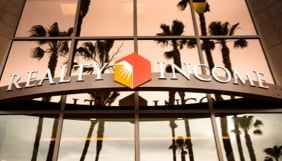
Earnings per Share (EPS) is predicted to be $1.06, with a recent estimate suggesting a decrease to $0.97.
Revenue is expected to increase by 9.3% year-over-year to $1.38 billion.
The company’s price-to-earnings (P/E) ratio stands at 57.83, indicating investor valuation of its earnings.
Realty Income Corp. (NYSE:O) is a prominent real estate investment trust (REIT) known for its monthly dividend payments. The company primarily invests in commercial properties, generating income through long-term lease agreements. Realty Income’s business model focuses on acquiring and managing retail and commercial properties, making it a key player in the real estate sector.
On May 5, 2025, Realty Income is set to release its quarterly earnings. Analysts predict an earnings per share (EPS) of $1.06, with revenue expected to be around $1.3 billion. However, recent estimates suggest a quarterly EPS of $0.97, marking a 5.8% decline from the previous year. Despite this, the company’s revenue is anticipated to reach $1.38 billion, a 9.3% increase year-over-year.
The downward revision of the EPS estimate by 9.5% over the past 30 days indicates a reassessment by analysts. Such revisions are significant as they often impact the stock’s short-term price performance. Investors closely monitor these changes, as they can influence market reactions and investment decisions.
Realty Income’s financial metrics provide insights into its valuation and performance. The company has a price-to-earnings (P/E) ratio of 57.83, indicating the amount investors are willing to pay per dollar of earnings. Its price-to-sales ratio is 9.64, reflecting its market value relative to revenue. The enterprise value to sales ratio is 14.62, and the enterprise value to operating cash flow ratio is 21.63, highlighting its valuation and cash flow efficiency.
The company’s earnings yield stands at 1.73%, showing the percentage of each dollar invested that was earned. With a debt-to-equity ratio of 0.69, Realty Income maintains a moderate level of debt compared to equity. Additionally, a current ratio of 1.68 suggests the company’s ability to cover short-term liabilities with short-term assets, indicating financial stability.

